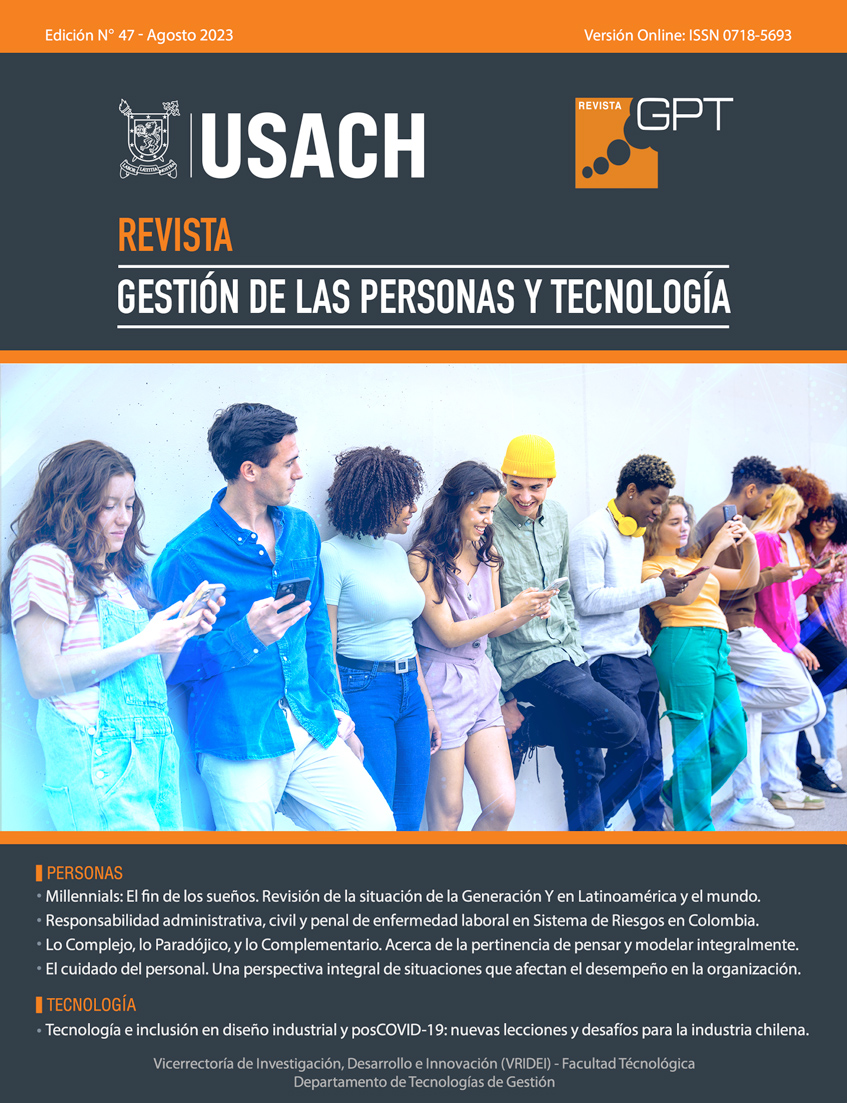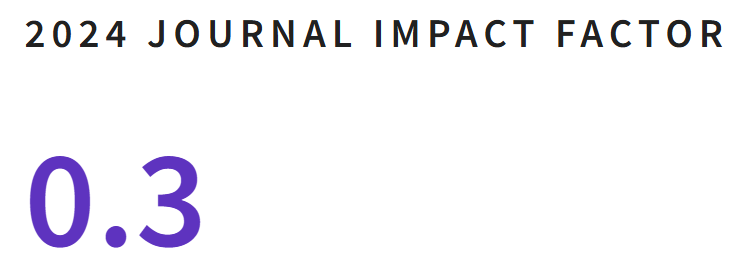Technology and inclusion in industrial design and postCOVID-19: new lessons and challenges for the Chilean industry
DOI:
https://doi.org/10.35588/vfsynq21Keywords:
inclusive design, industrial design, disability, social inclusion/exclusionAbstract
This essay offers a theoretical reflection that aims to analyze the incorporation of industrial design for people with disabilities during the post-crisis generated by the coronavirus pandemic in Chile. The absence of the participation of designers and designers in the inclusive character has been controversial. Some products that incorporate advertising, design and visual communication, of course, technology through the use of professional-level skills, such as different communication skills and strategies based on the Chilean industry. We understand as the rethinking of the inclusive design in the industry, and the industrial design to justify the necessary change in some concepts of the current design. Likewise, this rethinking is classified into two groups: i) concept of inclusive and accessible industrialization; and ii) concept of inclusive specialization and industrial adaptation. There are many different methods of design "industrialization" to choose the needs of the product, and create new approaches to the design process. Therefore, in Chile, there has not been much progress in the development of industrial design towards the inclusion of the product adapted for the future disability project. Finally, it is concluded on the importance of creating and strengthening research on substantial participation for clients/users with disabilities, depending on adapted and accessible commercial products, supporting the work of inclusive design or industrial marketing in Chile.
Downloads
References
Bernaschina, D. (2019). ¿Dónde está la publicidad inclusiva para personas con discapacidad en Chile?. Publicitas: Comunicación y Cultura, 7(2), 46-62. http://www.revistas.usach.cl/ojs/index.php/publicitas/article/view/4334
Bernaschina, D. (2022a). La cuestión de la industria cultural-creativa chilena en tiempos de COVID-19. Sapienza: International Journal of Interdisciplinary Studies, 3(1), 585–592. https://doi.org/10.51798/sijis.v3i1.242
Bernaschina, D. (2022b). Publicidad inclusiva: la nueva tendencia de la industria publicitaria para personas con discapacidad (Parte I). Publicitas: Comunicación y Cultura, 10(1), 49-55. https://www.revistas.usach.cl/ojs/index.php/publicitas/article/view/5604
Bernaschina, D. (2022c). Diseño inclusivo en Chile: una nueva visión al cambio de adaptación del diseño industrial para el beneficio de discapacidad. Thélos, 1(14), 65-82. Recuperado a partir de https://thelos.utem.cl/articulos/diseno-inclusivo-en-chile-una-nueva-vision-sobre-la-adaptacion-del-diseno-industrial-para-el-beneficio-de-la-discapacidad/
Bustamante, J. A. (2015). Innovarte. Una guía práctica para desarrollar nuestra capacidad creativa y de innovación. Ediciones B Chile.
Castro, J. (2012). El diseño para todos - la importancia de la investigación: De la exclusión a la inclusión. Actas de Diseño, (12), 127-131. https://dspace.palermo.edu/ojs/index.php/actas/article/view/2664
Comisión Económica para América Latina y el Caribe. (2021, 14 de octubre). La prolongación de la crisis sanitaria y su impacto en la salud, la economía y el desarrollo social. Repositorio digital CEPAL. https://hdl.handle.net/11362/47301
Clarkson, P. J, y Coleman, R. (2015). History of inclusive design in the UK. Applied ergonomics, 46, 235-247. https://doi.org/10.1016/j.apergo.2013.03.002
Clarkson, P. J., Coleman, R., Keates, S. y Lebbon, C. (2013). Inclusive design: Design for the whole population. Springer.
Clarkson, P. J. y Keates, S. (2004). Countering Design Exclusion: An introduction to inclusive design. Springer.
Ferrannini, A., Barbieri, E., Biggeri, M. y Di Tommaso, M. R. (2021). Industrial policy for sustainable human development in the post-Covid19 era. World Development, 137, 105-215. https://doi.org/10.1016/j.worlddev.2020.105215
Fernández Ferreras, D. A., Llorente Fernández, D. M. y Fadraga González, D. D. (2015). La Comunicación en los productos de diseño industrial. Revista de la Universidad Cubana de Diseño, (3), 100-142. http://a3manos.isdi.co.cu/docs/articulos/3-1-7.pdf
Hood, V., Loudon, D., Nicol, A., MacDonald, A. y Conway, B. (2005). Developing a computer aided design tool for inclusive design. In 20th Congress of the International Society of Biomechanics (p. 151). https://strathprints.strath.ac.uk/id/eprint/30936
Jacko, J. A. y Hanson, V. L. (2002). Universal access and inclusion in design. Universal Access in the Information Society, 2(1), 1-2. https://doi.org/10.1007/s10209-002-0030-x
Labra Pérez, L. (2015). Innovarte. Una guía práctica para desarrollar nuestra capacidad creativa y de innovación [Reseña]. Revista Gestión de las Personas y Tecnología, 8(22), 78-81. https://www.revistas.usach.cl/ojs/index.php/revistagpt/article/view/2097
Langdon, P., Clarkson, J. y Robinson, P. (2007). Designing accessible technology. Universal Access in the Information Society, 6(2), 117-118. https://doi.org/10.1007/s10209-007-0080-1
Langdon, P., Clarkson, J. y Robinson, P. (2010). Designing inclusive futures. Universal Access in the Information Society, 9(3), 191-193. https://doi.org/10.1007/s10209-009-0167-y
Langdon, P., Lázár, J., Heylighen, A. y Dong, H. (2014). Inclusive designing: Joining usability, accessibility, and inclusion. Springer.
Langdon, P., Persad, U. y Clarkson, J. (2010). Developing a model of cognitive interaction for analytical inclusive design evaluation. Interacting with Computers, 22(6), 510-529. https://doi.org/10.1016/j.intcom.2010.08.008
Lim, C. S. C. (2010). Designing inclusive ICT products for older users: taking into account the technology generation effect. Journal of Engineering Design, 21(2-3), 189-206. https://doi.org/10.1080/09544820903317001
Newell, A. F. y Gregor, P. (2000). User sensitive inclusive design”—in search of a new paradigm. En J. Thomas (Ed.), Proceedings on the 2000 conference on Universal Usability - CUU ’00. Proceedings on the 2000 conference (pp. 39-44). ACM Press. https://doi.org/10.1145/355460.355470
Persad, U., Langdon, P. y Clarkson, P.J. (2011). Investigating the Relationships between User Capabilities and Product Demands for Older and Disabled Users. En C. Stephanidis (Ed.) Universal Access in Human-Computer Interaction. Design for All and eInclusion. UAHCI 2011. Lecture Notes in Computer Science (pp. 110-118, vol 6765). Springer. https://doi.org/10.1007/978-3-642-21672-5_13
Uribe Becerra, M. (2008). Formación en competencias para el trabajo interdisciplinario del diseñador Enseñanza del Diseño Industrial abordada por diferentes profesiones. Kepes, 5(4), 153-178. https://revistasojs.ucaldas.edu.co/index.php/kepes/article/view/439
Yate Arévalo, A. (2011). Qué es y no es diseño industrial. Clepsidra, 7(12), 75-93. https://www.researchgate.net/publication/327157778_Que_es_y_no_es_diseno_industrial










